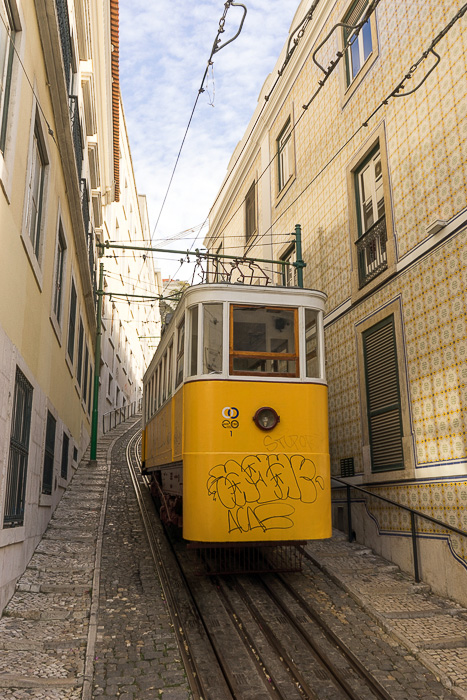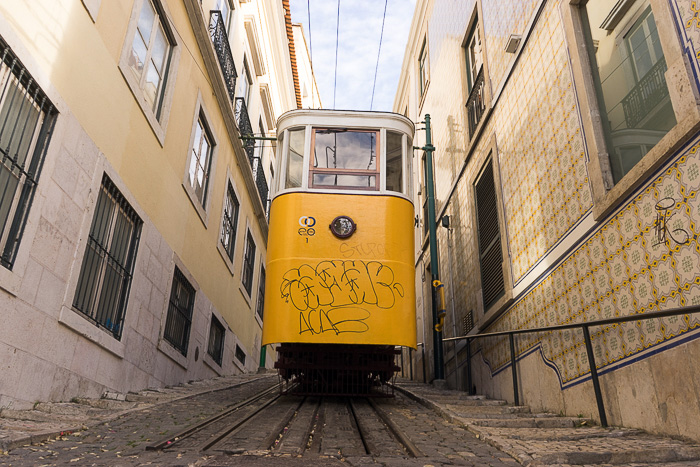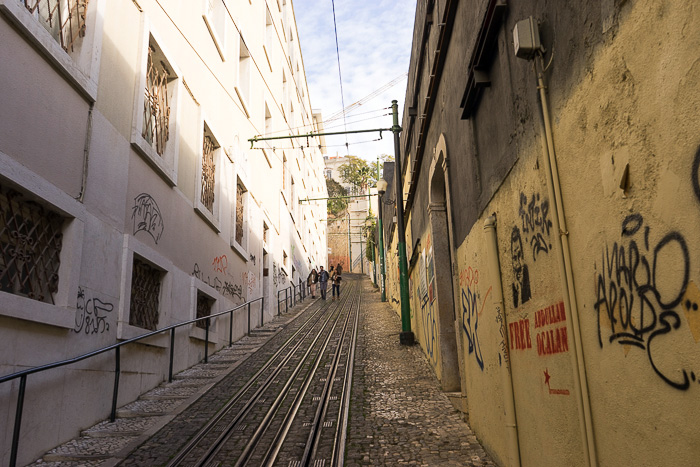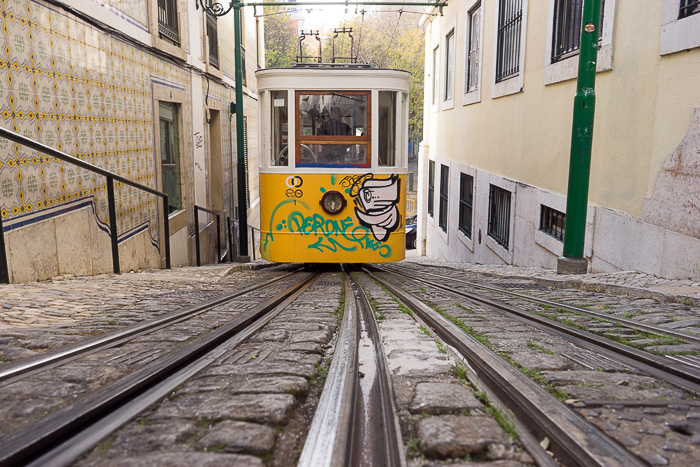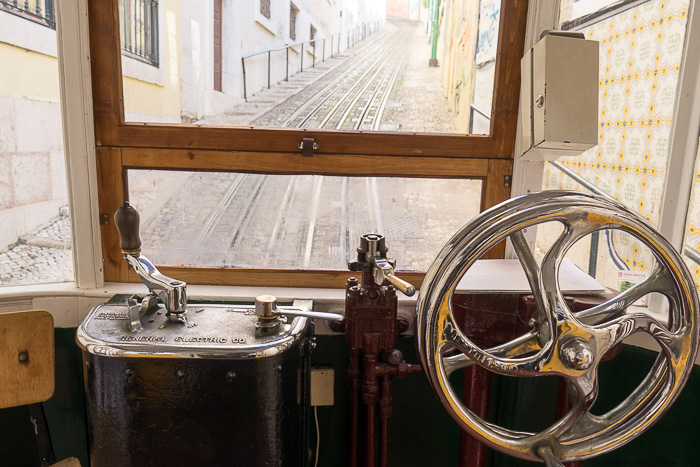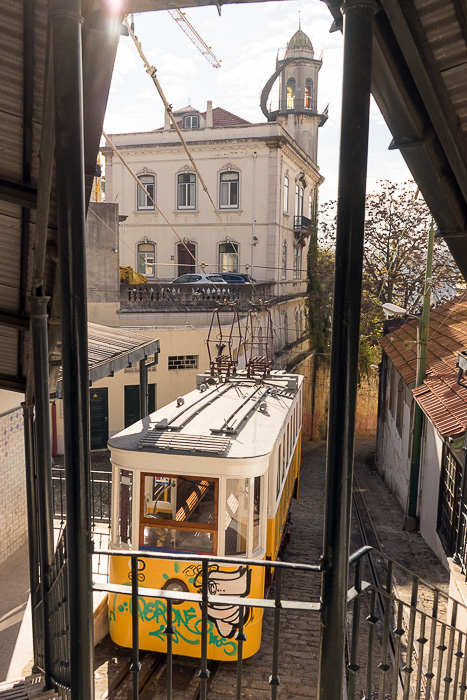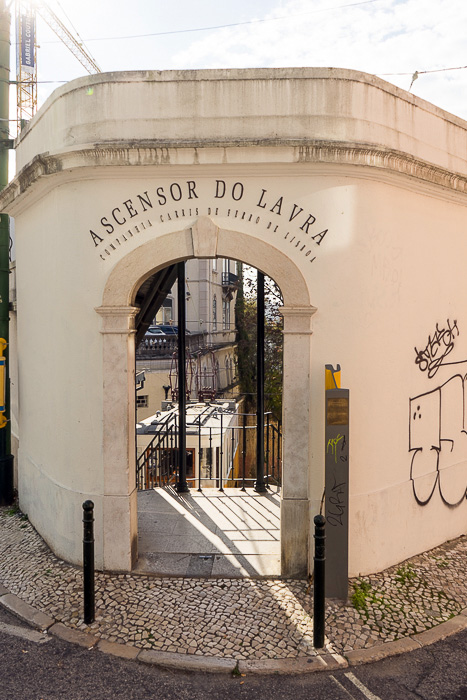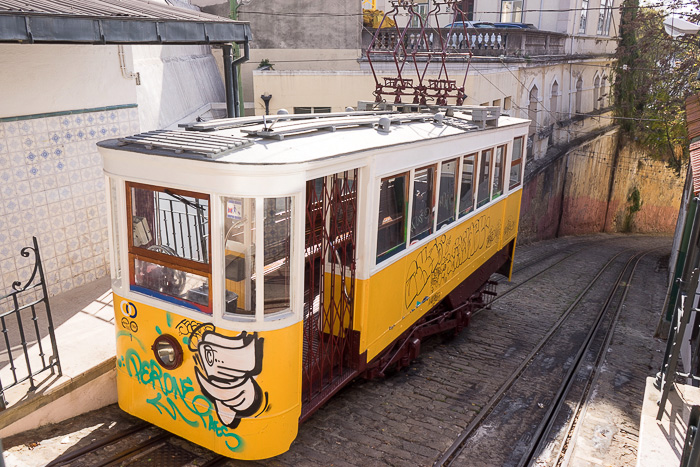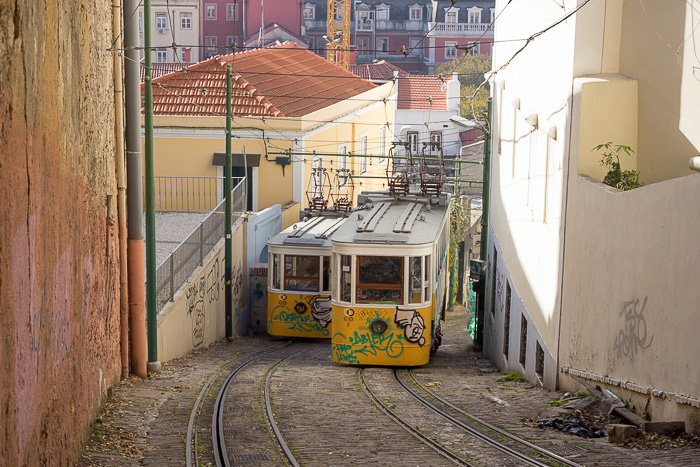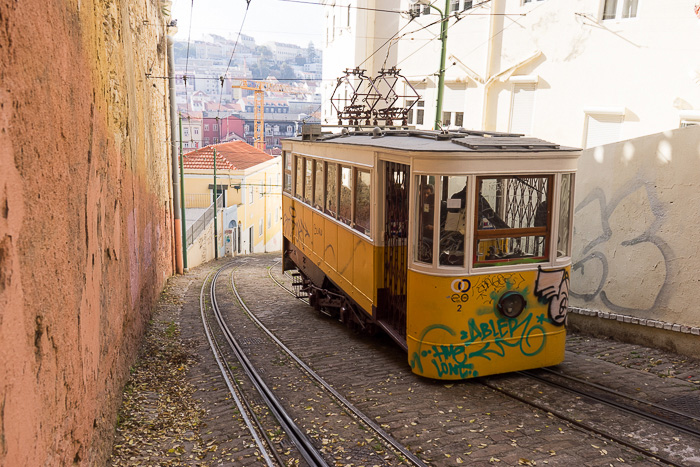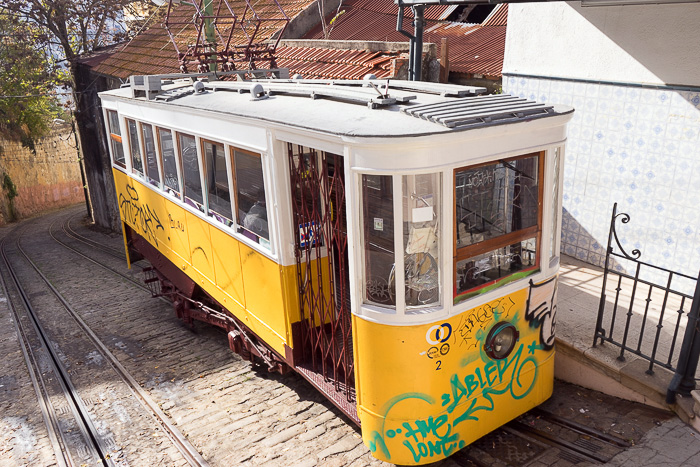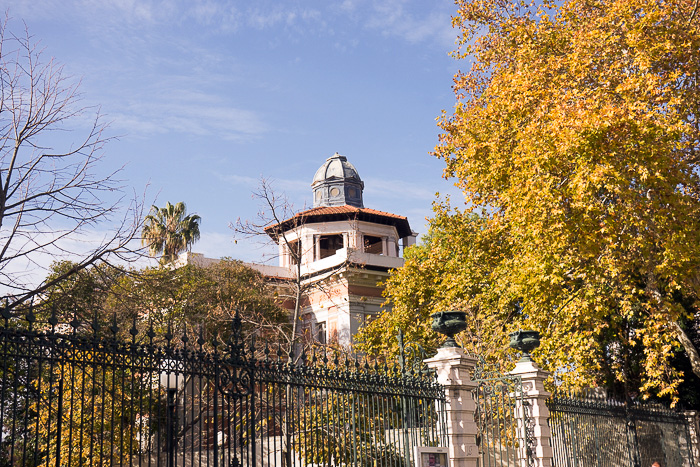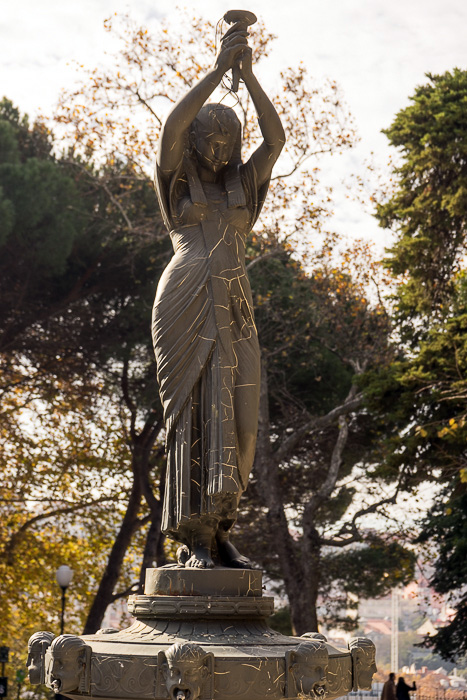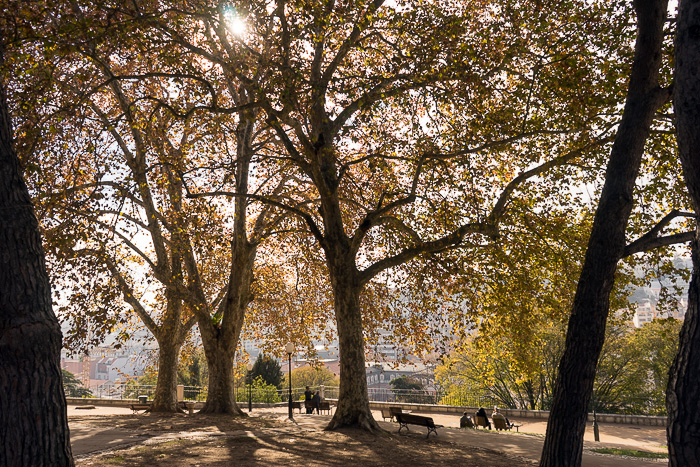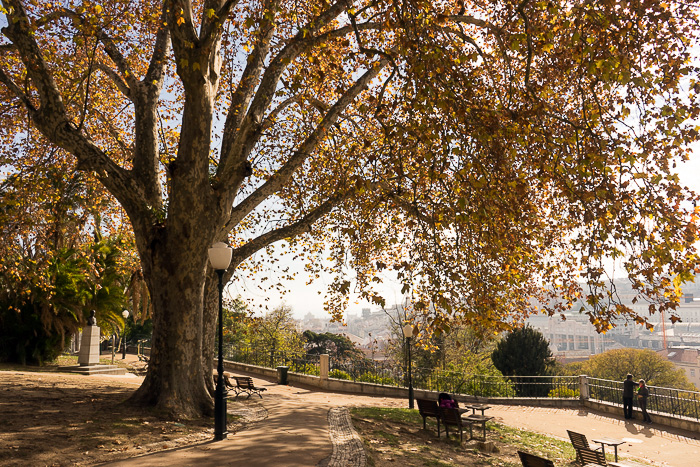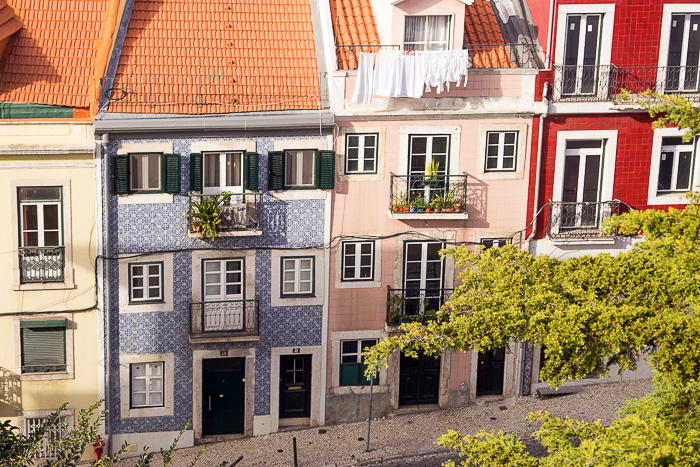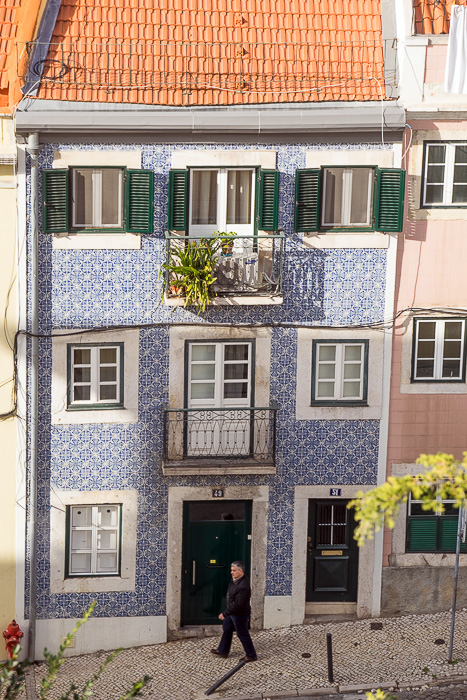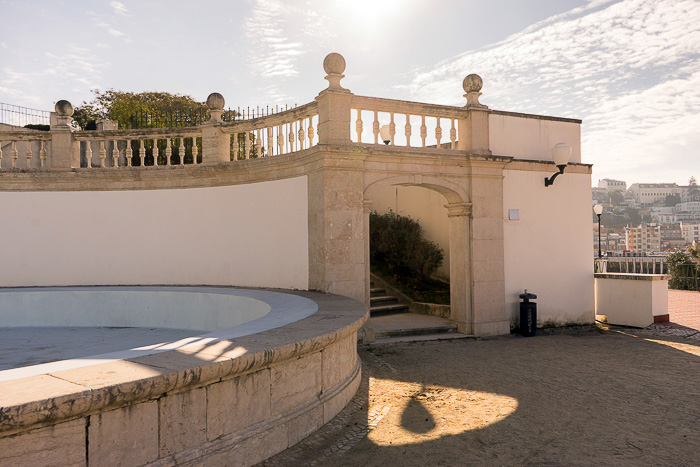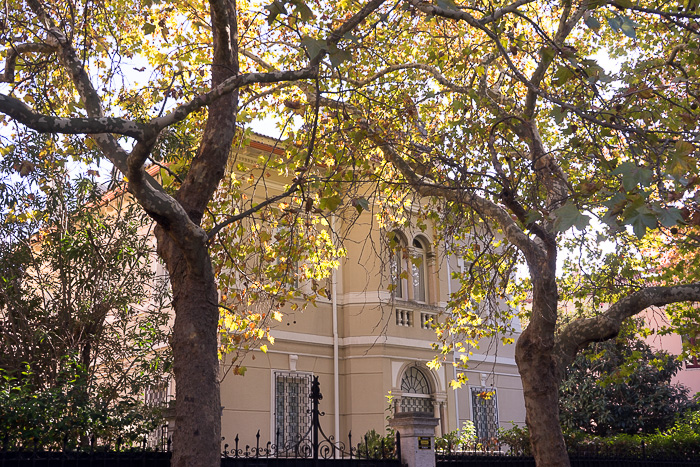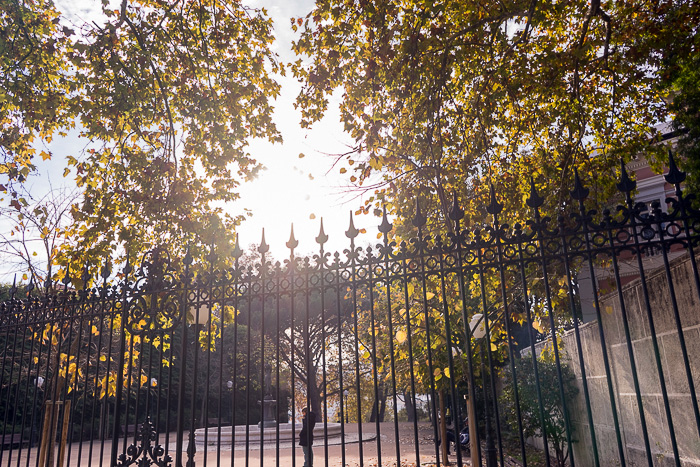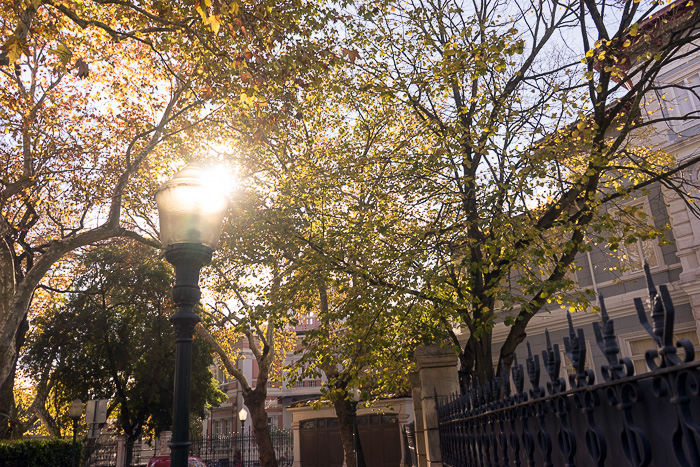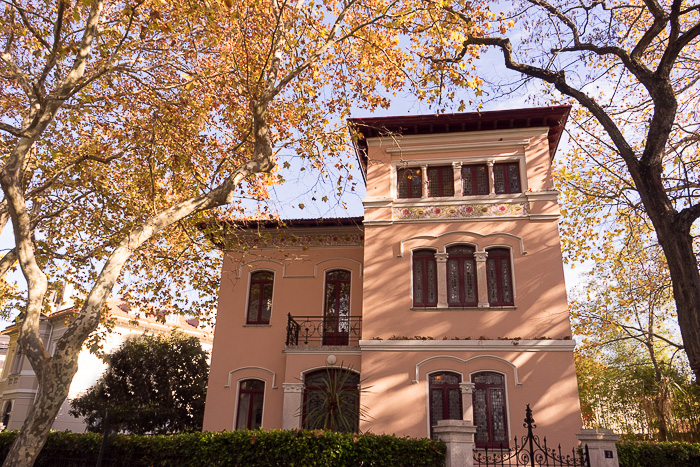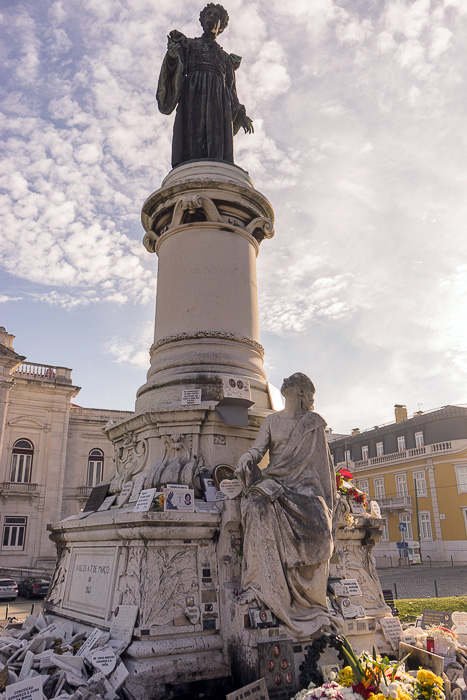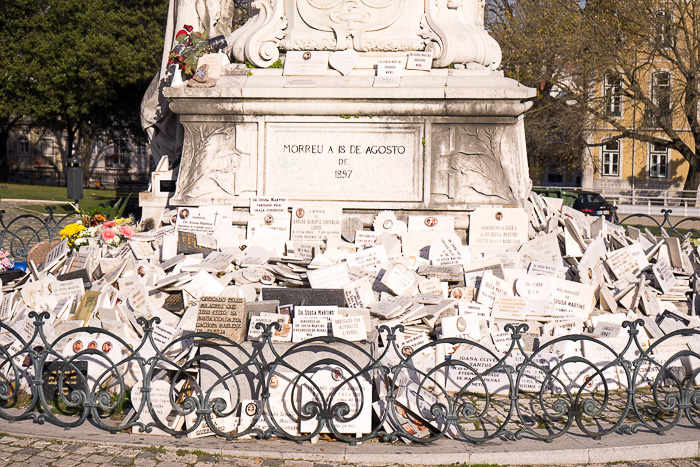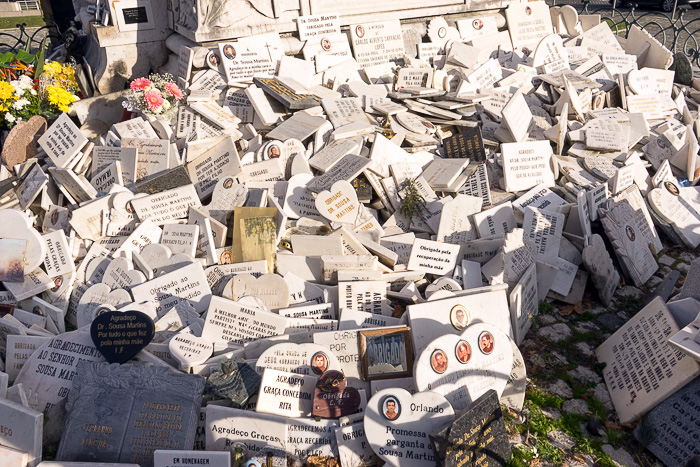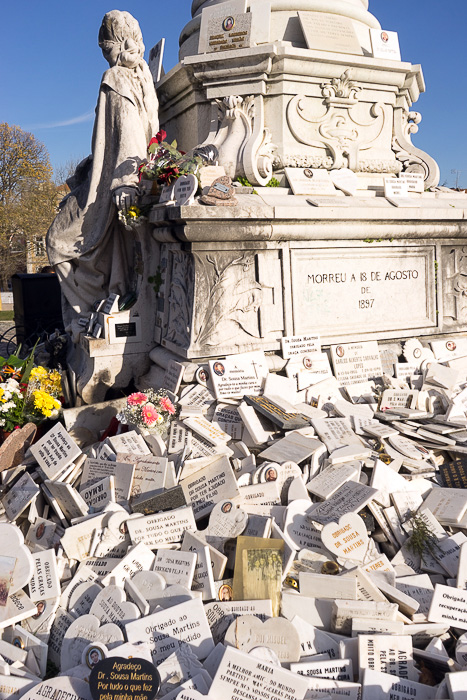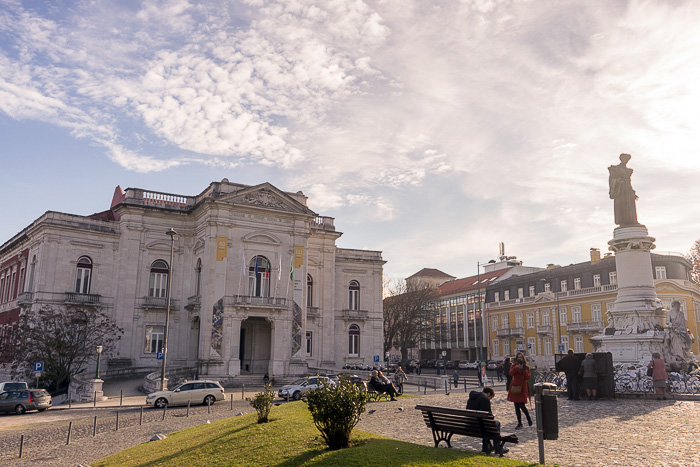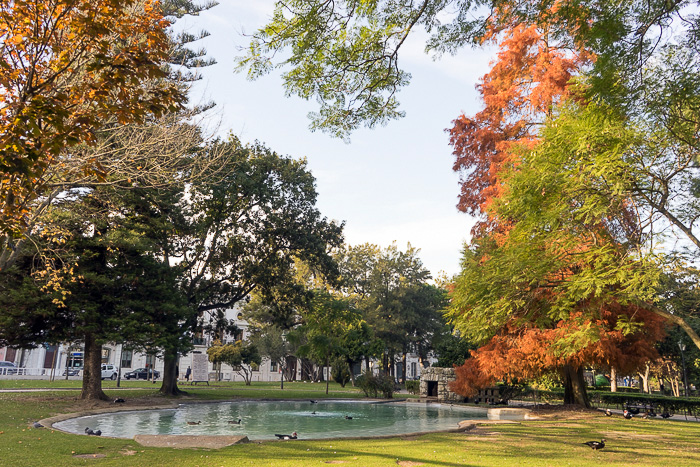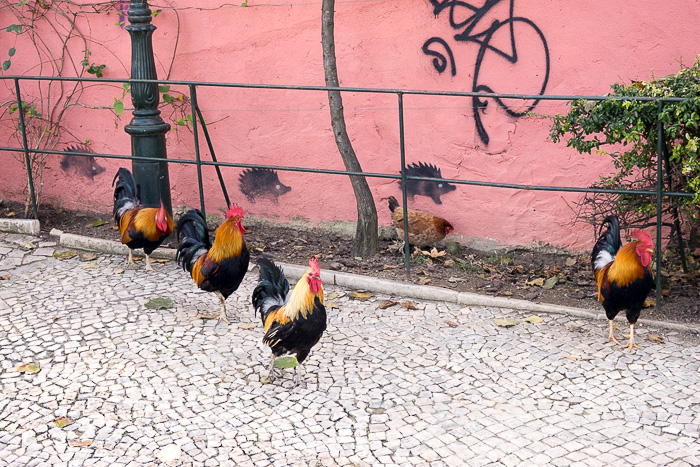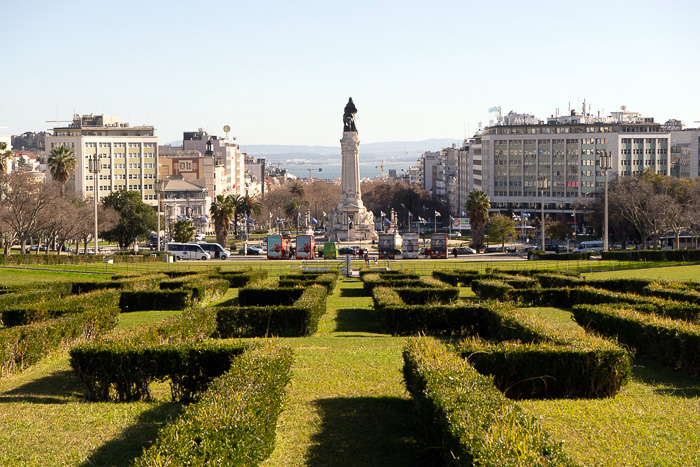The Ascensor do Lavra and Jardim do Torel
The Jardim do Torel is set high on a hill in the neighborhood of Santo António, and the easiest way to reach it is with the Ascensor do Lavra. Once at the top, the garden and the surrounding neighborhood provide plenty of sights for an entertaining day out.

Of the three funiculars still active in Lisbon, the Ascensor do Lavra is the oldest, dating from 1884. And because of its location just north of the regular tourism circuit, it’s also the only one without a steady line of foreigners waiting to board. The ride is steep but short, and probably not worth the money. But we had to take at least one funicular journey while in Lisbon.
Also, it was a novelty to arrive at the top of a hill without gasping for breath. We marched straight into the Jardim da Torel, which is laid out in terraces along the side of the hill, and features view-facing benches that thoughtfully include footstools for those weary legs which did walk up. We grabbed seats at a cafe in the park and looked out over Lisbon, able to spy the much more popular Miradour de São Pedro across the valley.
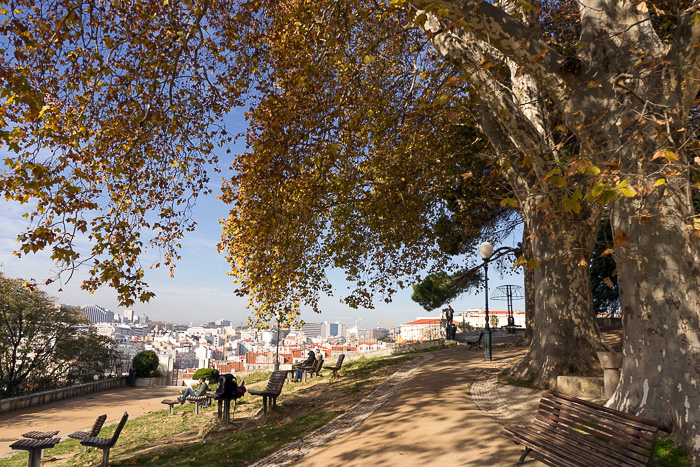
The Jardim da Torel is close to another large park, called the Campo dos Mártires da Pátria, or the Park of the Martyrs of the Homeland. A statue of someone named José Tomás da Sousa Martins sits at the head of the park. Hundreds of stone plaques are scattered, and we saw an elderly couple lighting candles at a little shrine. The natural assumption is that Sousa Martins must have been a saint of some sort. But the figure being venerated didn’t look at all religious…
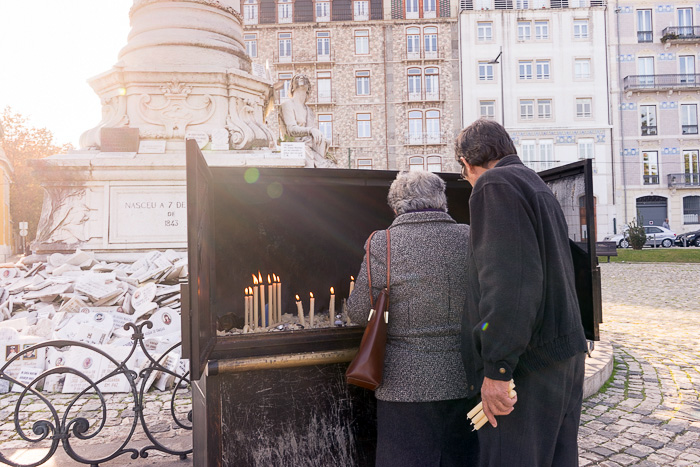
This is what smart phones are for! Within seconds, we had learned that Sousa Martins was a doctor active in the late 19th century. He had been a champion of the poor, beloved for his humanism and ground-breaking work on tuberculosis. After his death, he gained a cult-like following. Even today, people pray to him, and claim that his spirit has helped cure their diseases. Many of those thus healed will lay a stone plaque at his statue in tribute.

We continued our walk around the neighborhood, which was partially shaded by maple trees and looked lovely on this sunny winter afternoon. If the mansions are any indication, this was a big-money area in the city. Today, most of the buildings are no longer private residences, but have been given over to institutions. We stopped for lunch in one such place: the Centro Galego de Lisboa, which occupies an intimidating 19th-century palace of Italian design.
This is not an area which many tourists get to, because it doesn’t have any of Lisbon’s “must-see” sights. But it’s a beautiful section of town, with a relaxed and pleasant atmosphere, and quite central. If the crowds are getting you down, you might want to take the funicular up.
Locations on our Map: Ascensor do Lavra | Jardim do Torel | Campo dos Mártires da Pátria

